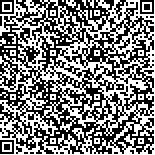下载中心
优秀审稿专家
优秀论文
相关链接
摘要

由于SAR遥感的独特优势,使它得到了广泛的应用。因此,对SAR图像的不确定性研究也越来越必要和迫切了。针对数据分析方法的不足,该文着重从机理的角度探讨SAR原始像元的不确定性。相位误差、位置误差和灰度误差三者关系、各种误差分类和综合以及这些误差对SAR原始像元不确定性作用等问题往往是困扰从机理角度对SAR图像不确定性研究的主要障碍,该文重点讨论这些问题。
SAR is an all-weather remote sensing technique which achieves high resolution and large swath widths. It is rapidly becoming a key technology in remote-sensing applications. SAR uses a short chirped pulse and matched-filter processing to obtain fine range resolution. Fine azimuth resolution which is range-independent is obtained by using the platform motion and coherent processing of Doppler-shifted radar pulses to synthesize a large antenna. Due to environmental disturbance and limitation of the SAR facility and handling techniques, errors, including random errors, system errors or both, would occur in each system node or subprocess of the overall SAR imaging process. These errors may greatly affect the quality of SAR images and lead to the uncertainty in their eventual application. For example, phase error may severely blur and deform SAR images. Image defocusing, radiometric distortion, and increased sidelobe levels hamper target detection and recognition. Geometric distortion prevents direct pixel-to-pixel comparison of SAR images or the matching of SAR with other forms of imagery It is crucial to understand the nature of error and the way they affect the quality of final images through error propagation and synthesis. Generally speaking, the sources of uncertainty in SAR system include the instability of SAR sensor, navigating system, platform motion and its motion compensation, SAR digital imaging process, image process and etc. These error sources could cause phase error, positional error and gray level error which are embedded in the final corrupted image. Currently, processing of gray level error includes radiometric calibration, speckle noise reduction and radiometric enhancement,positional error, handled by geometric coarse correction and geometric fine correction. Presently, the solution of phase error and positional error falls mainly in motion compensation,it is related with the Inertial Navigation System, SAR data driven process, and the combination. The relationships among on phase error, gray level error, and possibly positional error and their synthesis, though important, have not been investigated. Furthermore, the way these errors propagate in terms of mechanism from error sources through the SAR imaging process has seldom been made. A thorough examination of these aspects will prove to be crucial in uncertainty management and quality improvement of SAR images . The purpose of the present study is to make an initial attempt to probe into various sources causing phase error, positional error and gray level error, and to establish a relationship among these errors. We also investigate the mechanism-based propagation of errors along the SAR imaging process, their final synthesis and impact on the quality of SAR images.

